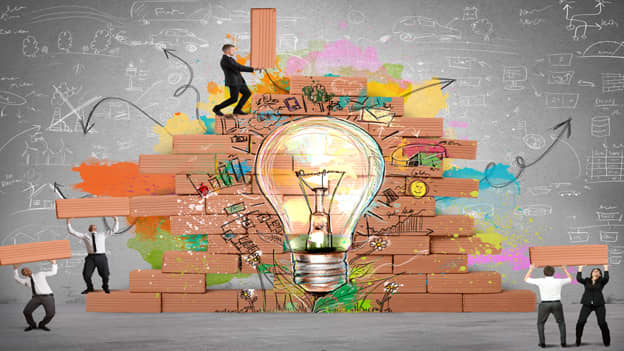
From Mindset to Manifestation: Building a Culture of Innovation and Collaboration
As the world shifts towards a more digital economy, businesses must adapt and innovate to stay competitive and relevant. But innovation cannot be achieved through individual efforts alone; it requires a culture of collaboration and mindset that encourages creative thinking and continuous improvement.
From mindset to manifestation, building a culture of innovation and collaboration is key to driving the success of any organization. Let’s explore some of the essential components of building this type of culture.
1. Foster a Growth Mindset
Individuals with a growth mindset believe that their abilities can be developed through dedication and hard work. This type of mindset is essential for cultivating innovation, as individuals with a growth mindset are more likely to take risks, learn from their failures, and persevere through challenges.
Leaders can foster a growth mindset within their organizations by providing opportunities for learning and development, encouraging employees to take ownership of their work, and recognizing and rewarding progress and achievements.
2. Encourage Open Communication and Collaboration
Open communication and collaboration are essential to building a culture of innovation. Leaders must create an environment where employees feel safe and encouraged to share their ideas, opinions, and feedback. A positive workplace environment where everyone has a voice can lead to more creative, innovative solutions.
It’s essential to provide employees with the tools and resources they need to collaborate effectively. This includes technologies for remote collaboration, shared workspaces, and brainstorming sessions to encourage cross-functional collaboration.
3. Think Outside of the Box
Encouraging individuals to “think outside of the box” can lead to innovative and creative solutions. Establishing a culture that values risk-taking and experimentation can enable individuals to generate new and unconventional ideas.
Whether it’s through taking on new projects or experimenting with new technologies, leaders must encourage employees to push the limits and think beyond what has been done before.
4. Celebrate and Recognize Innovation
Celebrating and recognizing innovation helps to encourage and reinforce innovative behavior. This includes publicly acknowledging and rewarding individuals and teams for their innovative ideas, projects, and initiatives.
Implementing innovation awards, recognition programs, competitions, and other forms of rewards can encourage employees and teams to continue driving innovative projects and furthering the organization’s goals.
5. Continued Learning and Development
Innovation is not a one-time event but a continuous process that requires ongoing learning and development. Leaders must provide training and development opportunities that enable employees to develop new skills, expand their knowledge, and stay up-to-date with industry trends and innovations.
Continued learning and development help to maintain a culture of innovation by promoting curiosity, critical thinking, and a growth mindset.
In conclusion, building a culture of innovation and collaboration requires a mindset that values growth, open communication, experimentation, recognition and rewards, and ongoing learning and development. It is not an overnight process, but rather a continuous effort to foster and maintain a culture that drives innovation and sustainable success.



